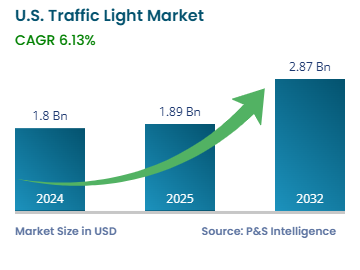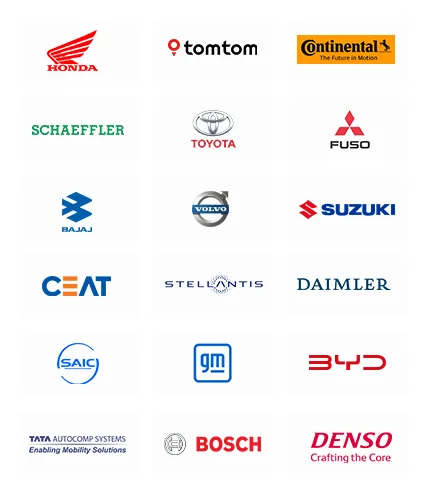U.S. Traffic Light Market Future Outlook
The U.S. traffic light market was valued at USD 1.80 billion in 2024, and it is expected to reach USD 2.87 billion by 2032, growing at a CAGR of 6.13% from 2025–2032. This is because of the adoption of smart technologies, sustainability efforts, and the increasing rate of urbanization.
Modern traffic signals exceed their basic role as timers that cycle between red, yellow, and green lights. Cities worldwide use artificial intelligence-controlled traffic lights, which adapt their operations to the actual traffic scenario.
Smart systems comprise cameras, sensors, and data analytics platforms, which monitor road traffic volume, congestion, and people and vehicle movement at intersections. Smart traffic lights operate dynamically through an adaptive system that directs more time to busy traffic zones, to improve vehicle movement. Thus, an intelligent signal system reduces traffic congestion by cutting down on empty intersection wait times, while offering improved driving conditions.
Beyond convenience, the system delivers various additional advantages, the biggest of which is reduced fuel usage and emissions, because vehicles remain stationary for shorter periods during red light waiting times. Fewer vehicle emissions occur because stop-and-go traffic is reduced significantly.
Emergency response vehicles obtain green light priority, allowing for an improvement in their response times during critical situations. AI-powered systems will develop additional capabilities to synchronize with self-driving cars, which will make intersections a safer operation point and a more efficient commuting system.
The adoption of this technology, along with artificial intelligence, in an increasing number of cities will enhance traffic management by driving down traffic congestion and improving road safety, as well as pedestrians.




